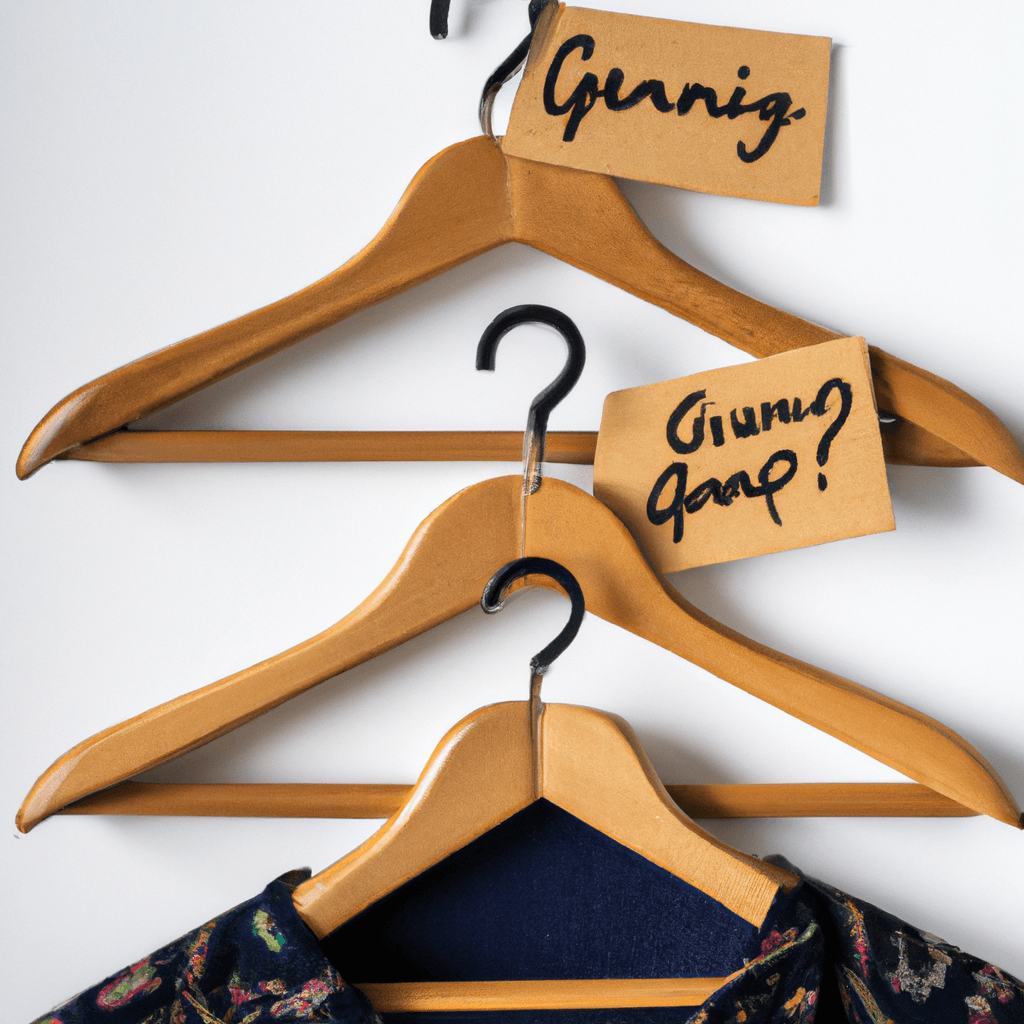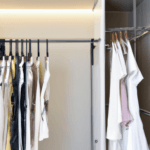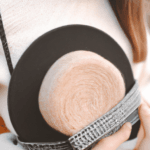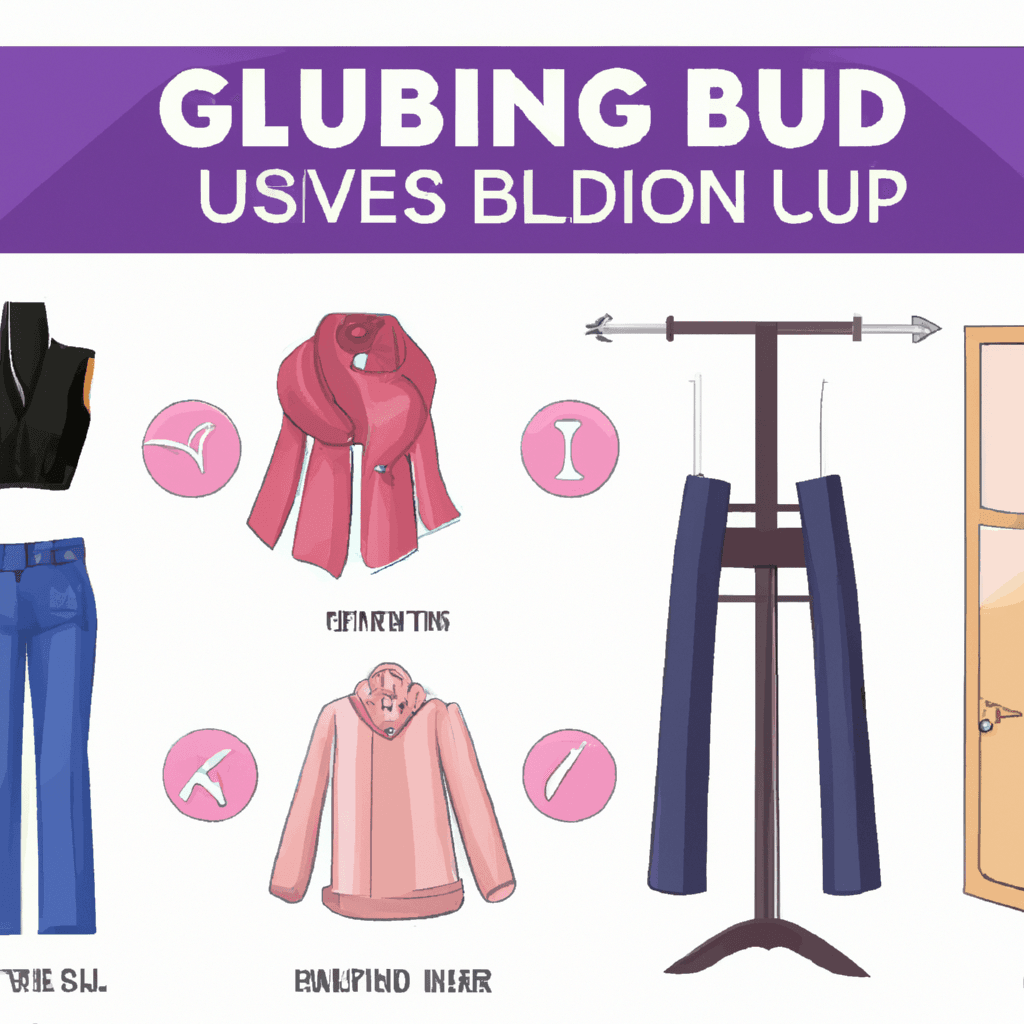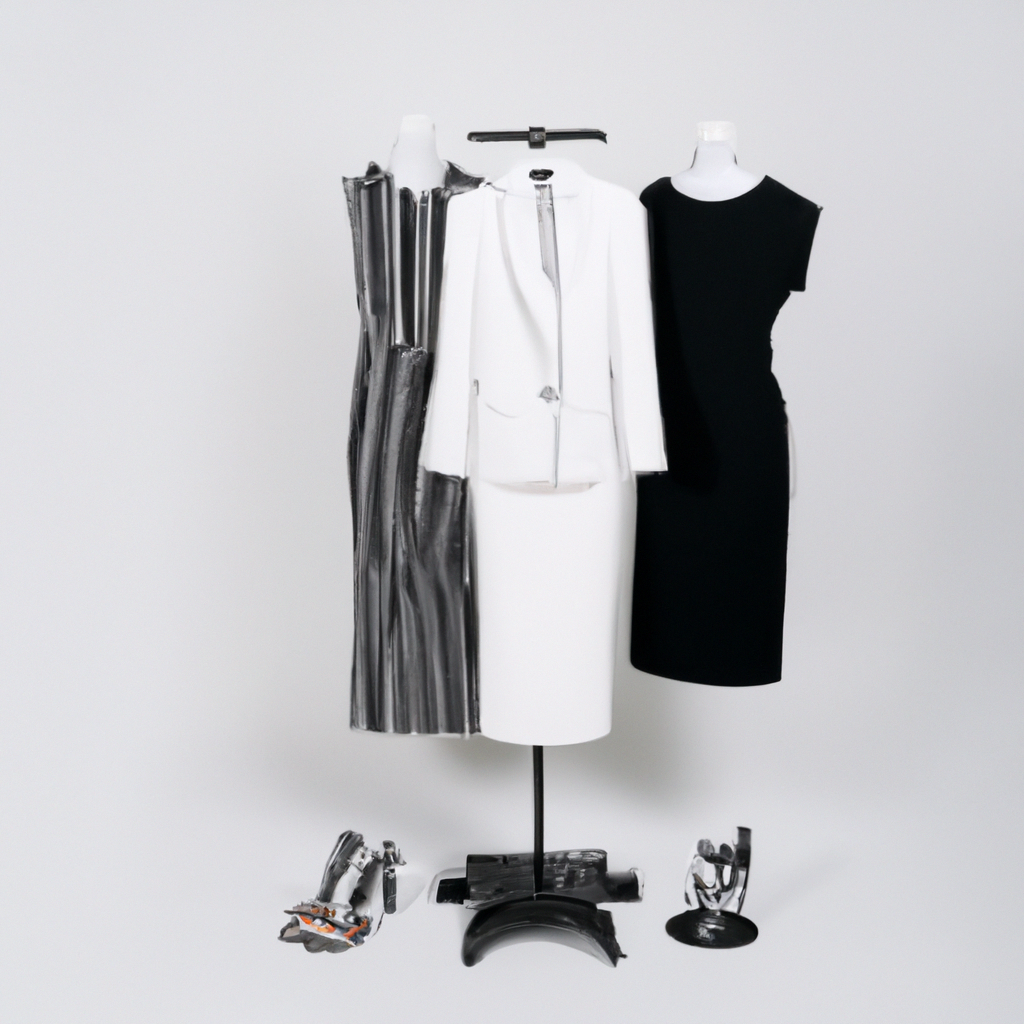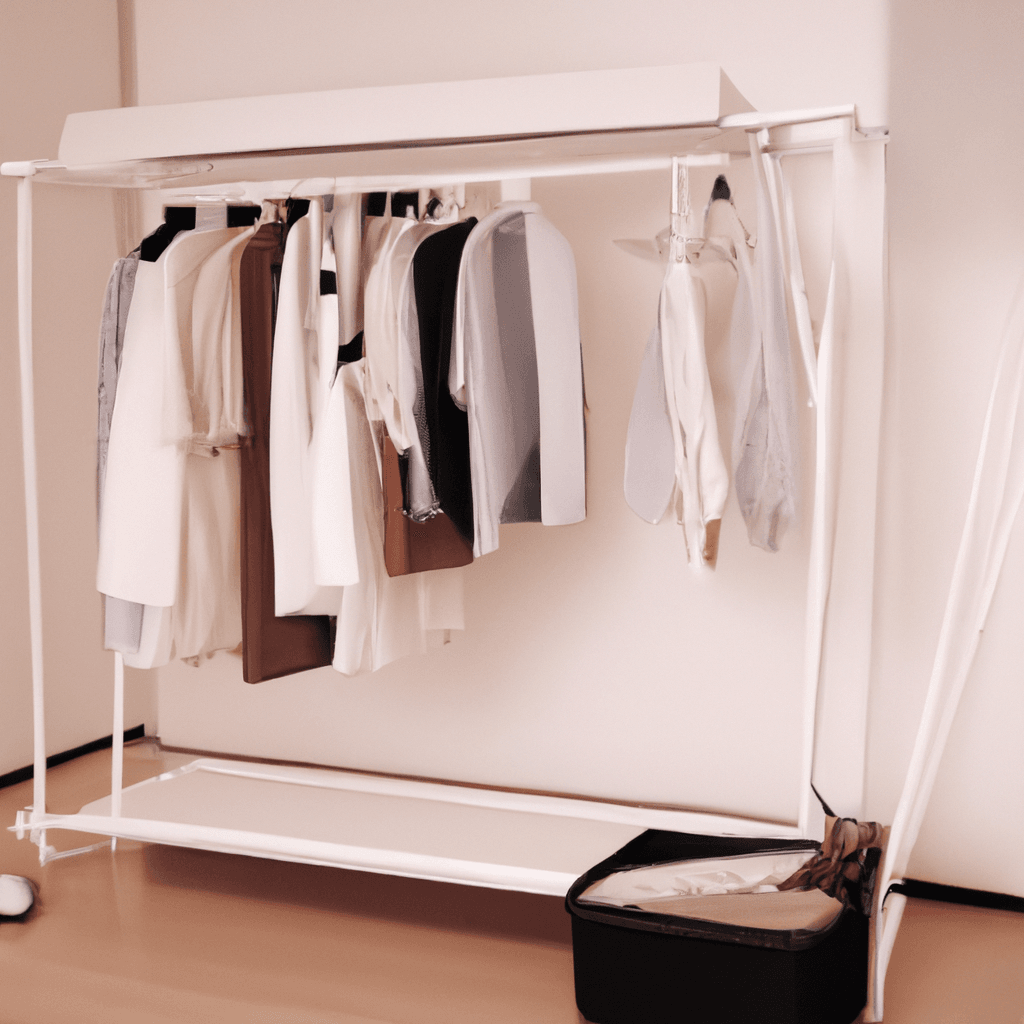In the quest for a sophisticated wardrobe, it’s easy to get swept up in the allure of a growing collection. But amid the sea of fast fashion and fleeting trends, it’s worth pausing to consider the benefits of investing in quality over quantity. While a larger wardrobe may seem appealing, opting for timeless pieces of superior craftsmanship can elevate your style and save you money in the long run. By choosing quality over quantity, you’ll not only be building a wardrobe that stands the test of time but also cultivating a sense of personal style that exudes confidence and sophistication.
Understanding Quality vs. Quantity
Defining ‘quality’ in relation to clothing
When it comes to clothing, quality refers to the overall craftsmanship, durability, and materials used in the production of an item. High-quality clothing is designed to stand the test of time, with attention to detail, precision stitching, and superior fabrics. Quality garments often exhibit impeccable fit and finish, making them more comfortable to wear and enhancing their overall aesthetic appeal.
What does ‘quantity’ mean in terms of wardrobe
On the other hand, quantity in terms of wardrobe refers to the sheer number of items one possesses. A quantity-focused wardrobe may prioritize owning a wide variety of clothing options, with a large number of pieces available for different occasions or style preferences. This approach often involves purchasing inexpensive or trendy items that may not have the same level of craftsmanship or durability as high-quality garments.
Weighing the value of quality and quantity
In determining whether to focus on quality or quantity when building a wardrobe, it is essential to consider personal preferences, lifestyle, and long-term goals. While having a large quantity of clothing options may provide more variety and flexibility in styling, investing in high-quality pieces offers numerous advantages, including greater longevity, elevated style, and environmental sustainability. By striking the right balance between quality and quantity, it is possible to create a wardrobe that is both visually appealing and practical.
The Importance of a Sophisticated Wardrobe
Benefits of a well-curated, sophisticated wardrobe
A well-curated, sophisticated wardrobe brings numerous benefits to the wearer. Firstly, it allows for effortless and cohesive styling, as each item has been intentionally selected to complement one another. This eliminates the frustration of mismatched outfits and ensures a polished and put-together appearance. Additionally, a sophisticated wardrobe can save time and reduce decision fatigue, as the selection process becomes more streamlined and efficient.
The psychological impact of dressing well
Dressing well can have a significant impact on one’s psychological well-being. When you wear high-quality, well-fitting garments that make you feel confident and comfortable, it boosts your self-esteem and sense of self-worth. The act of dressing in a sophisticated manner can enhance your mood, improve your body image, and promote a positive mindset. By investing in quality clothing, you are investing in yourself and your overall mental well-being.
How a sophisticated wardrobe influences personal style
A sophisticated wardrobe serves as a foundation for developing your personal style. By curating a collection of high-quality, timeless pieces, you can create a signature look that reflects your personality and values. Having a well-defined personal style helps you make intentional fashion choices, ensuring that your clothing aligns with your self-image and the impression you want to convey to others. It allows you to stand out and be recognized for your unique sense of style.
Cost Implications of Quality vs. Quantity Shopping
Analyzing the cost-per-wear of quality items
One argument often made in favor of quality clothing is their cost-per-wear. While high-quality garments may initially come with a higher price tag, their longevity and durability often lead to a lower cost-per-wear over time. By investing in well-made pieces that can be worn repeatedly without losing their shape or quality, you can save money in the long run, as you won’t need to replace them as frequently as lower-quality items.
Understanding the long-term investment in quality clothing
Quality clothing is an investment in your wardrobe and personal style. Unlike fast-fashion pieces that quickly go out of style or degrade after just a few washes, high-quality garments are designed to last. By purchasing fewer, but higher-quality items, you can build a wardrobe that stands the test of time. This long-term investment approach ensures that you have key pieces that can be worn year after year, reducing the need for constant shopping and saving you money in the long run.
Exploring the financial implications of quantity-based shopping
While quantity-based shopping may offer the allure of having a wide variety of options, it can come at a financial cost. The constant need to purchase new items to keep up with trends or satisfy the desire for novelty can result in a significant amount of money spent over time. Additionally, lower-quality items may need to be replaced more frequently due to wear and tear, ultimately contributing to a higher overall expenditure. It is important to consider these financial implications when deciding between quality and quantity-based shopping.
Longevity of Quality Clothing
How quality clothing tends to last longer
One of the defining characteristics of quality clothing is its durability. High-quality garments are made with superior materials and meticulous craftsmanship, ensuring that they can withstand regular wear and tear. From reinforced seams to high-quality buttons, every aspect of the garment is designed to last. This longevity is especially beneficial for staple items such as coats, trousers, or blazers that form the backbone of a versatile wardrobe.
Why investing in timeless pieces is beneficial
Investing in timeless pieces is a smart decision when building a quality-focused wardrobe. Timeless garments are not bound by passing trends, allowing them to remain relevant and stylish for years to come. Versatile classics like a well-tailored suit, a little black dress, or a cashmere sweater are all examples of timeless pieces that transcend seasons and can be worn repeatedly without losing their appeal. By focusing on these timeless items, you ensure that your wardrobe remains both fashionable and functional.
Maintenance and care for quality items
To fully benefit from the longevity of quality clothing, proper maintenance and care are crucial. Following the care instructions provided by the manufacturer, such as handwashing delicate items or dry cleaning suits, goes a long way in preserving the quality of your garments. Additionally, storing items properly, such as hanging suits in garment bags or folding knits to prevent stretching, helps maintain their shape and appearance over time. By taking the necessary steps to care for your quality items, you can further extend their lifespan and enjoy them for years to come.
Sustainability Aspects of Quality vs. Quantity
Evaluating the environmental impact of quantity shopping
Quantity-based shopping, often associated with fast fashion, contributes significantly to the environmental impact of the fashion industry. Rapidly changing trends and the desire for newness result in high demand for cheaply made, disposable clothing. This leads to overproduction, excess waste, and increased carbon emissions. The environmental repercussions, including pollution from textile production and landfill waste, make quantity-based shopping an unsustainable choice.
How quality shopping contributes to sustainability
In contrast, quality shopping promotes sustainability by focusing on well-made items that are designed to last. By investing in high-quality clothing, you participate in the slow fashion movement, which emphasizes reducing waste and making conscious choices that benefit both the environment and workers in the fashion industry. Quality garments often use ethically sourced materials, have better manufacturing practices, and support fair wages. By choosing quality over quantity, you contribute to a more sustainable and responsible fashion industry.
Addressing the issue of ‘fast fashion’
Fast fashion, characterized by its rapid production and low prices, has become a cause for concern. The constant desire for new trends and the pressure to keep up with fast-paced fashion cycles have significant social and environmental consequences. From exploitative labor practices to the excessive use of resources, fast fashion has detrimental effects on both people and the planet. By shifting towards quality-focused shopping, we can challenge the fast fashion culture and promote a more sustainable approach to fashion consumption.
Effect of Quality Clothing on Personal Image
How wearing quality clothes affects perception
Wearing quality clothing can significantly impact how others perceive you. High-quality garments often exude a sense of sophistication, attention to detail, and professionalism. When you dress well, people tend to view you as more put-together, confident, and capable. Whether it’s for a job interview, a special occasion, or everyday interactions, wearing quality clothing allows you to make a positive impression and project a polished image that aligns with your personal and professional goals.
The correlation between quality clothing and confidence
There is a strong correlation between wearing quality clothing and feeling confident. When you put on a well-made, flattering garment that fits you perfectly, it enhances your body image and boosts your self-esteem. Knowing that you look good and that your clothing is of high quality can give you an extra dose of confidence in various situations. This confidence extends beyond external appearances and can positively impact your overall self-assurance and interactions with others.
Quality clothing and its impact on professional environments
In professional environments, the importance of quality clothing is particularly evident. Dressing professionally often requires a level of refinement and attention to detail that can be achieved through quality garments. From tailored suits to elegant blouses, the quality of your clothing can signal to others that you take your work seriously and have a keen eye for detail. In professional settings, quality clothing helps establish credibility and inspires confidence in your abilities.
Building a Quality-focused Wardrobe
Starting steps to curate a quality-focused wardrobe
Building a quality-focused wardrobe starts with a thoughtful approach to shopping. Begin by identifying your personal style, considering your lifestyle, and identifying the key pieces that will form the foundation of your wardrobe. Prioritize investing in versatile classics that will withstand the test of time and form the basis for a range of outfits. By starting with a few high-quality, well-fitting garments, you can gradually build upon them and create a wardrobe that reflects your personal style and values.
Selecting wardrobe essentials for quality shopping
When focusing on quality shopping, there are certain wardrobe essentials that should be prioritized. These essentials serve as the building blocks of a versatile and sophisticated wardrobe. Timeless items such as a tailored blazer, well-fitted jeans, a white dress shirt, a little black dress, and a quality leather handbag are a few examples of must-have pieces. By investing in these essentials, you ensure that you have a solid foundation to build upon and create a variety of stylish outfits.
Tips for identifying quality clothing
Identifying quality clothing can be challenging, especially with the abundance of fast fashion and low-quality options on the market. However, there are several indicators to look for when assessing the quality of a garment. Pay attention to the fabric composition, as natural fibers like cotton, wool, or silk are often associated with higher quality. Additionally, examine the stitching and finishes, as well-made garments tend to have precise and consistent stitching. Finally, consider the brand’s reputation and customer reviews, as established brands with a history of quality craftsmanship often maintain high standards in their products.
Dangers of Quantity-based Shopping
Exploring the concept of ‘clothing fatigue’
One of the dangers of quantity-based shopping is the concept of clothing fatigue. When faced with an overwhelming number of options, it can become challenging to make decisions and create cohesive outfits. The constant need to keep up with trends and purchase new items can lead to decision fatigue and dissatisfaction with one’s wardrobe. This fatigue can result in a cycle of overconsumption and ultimately diminish the joy and satisfaction that comes from having a well-curated wardrobe.
The potential for waste in quantity-focused wardrobes
Quantity-focused wardrobes often result in excess waste. The constant accumulation of inexpensive, disposable items leads to closet clutter and the need for regular purging. These frequent purges contribute to the growing issue of textile waste, as discarded garments end up in landfills instead of being recycled or repurposed. This waste not only has environmental implications but also represents a misuse of resources and contributes to the negative impact of the fashion industry.
Impact of impulse buying in quantity shopping
Impulse buying is a common pitfall of quantity shopping. The allure of low prices and the thrill of a new purchase can lead to impulsive decision-making. In these instances, the focus is often on acquiring more items rather than prioritizing quality or considering long-term needs. This cycle of impulse buying feeds into the fast fashion culture and contributes to overconsumption. By shifting towards a quality-focused approach, you can break free from the cycle of impulse buying and make more intentional, sustainable Fashion choices.
Quality vs. Quantity: Striking the Balance
Why a balanced approach may be beneficial
Striking a balance between quality and quantity is a beneficial approach to building a wardrobe that is both versatile and long-lasting. By having a mix of high-quality staples and a few well-chosen trend pieces, you can enjoy the benefits of both quality and variety. This balanced approach allows for flexibility in styling while ensuring that the majority of your wardrobe consists of quality items that will endure the test of time.
Creating a flexible wardrobe with both quality and quantity items
Creating a flexible wardrobe involves carefully curating a collection of high-quality essentials while allowing for the inclusion of a few quantity items for variety. This combination ensures that you have quality pieces for everyday wear and special occasions, while also having the ability to experiment with different trends and styles. By thoughtfully integrating quantity items, you can add a touch of novelty and freshness to your wardrobe without compromising on quality.
Navigating sales and discounts with a mind for quality
Sales and discounts can sometimes be tempting, but it’s important to approach them with a mind for quality. While these opportunities can provide access to high-quality items at a more affordable price, it’s crucial to resist the urge to purchase simply because of the reduced price. Instead, use sales as an opportunity to invest in quality pieces that you’ve been eyeing for a while or to stock up on wardrobe essentials. By carefully considering each purchase, even during sales, you can maintain a quality-focused mindset and avoid falling into the trap of quantity-based shopping.
Changing Perceptions about Clothes Shopping
Moving away from disposable fashion culture
Changing perceptions about clothes shopping involves shifting away from the disposable fashion culture that has become prevalent in our society. Instead of viewing clothing as disposable, treating it as a valuable investment and embracing a more sustainable approach is essential. This change in mindset encourages individuals to prioritize quality over quantity, seek out ethical and sustainable brands, and support the slow fashion movement. By actively participating in this shift, we can collectively make a positive impact on the fashion industry and the environment.
Encouraging investment in quality wardrobe pieces
To promote a more conscious approach to clothing consumption, it is crucial to encourage the investment in quality wardrobe pieces. This can be achieved through education and awareness about the long-term benefits of quality items, the environmental impact of fast fashion, and the importance of personal style. By highlighting the value of quality over quantity and showcasing the positive effects it has on self-esteem, personal image, and sustainability, individuals can be inspired to make more thoughtful and intentional choices when curating their wardrobes.
How culture and society can influence shopping habits
Culture and society play a significant role in shaping our shopping habits. The influence of media, advertising, and societal norms often promotes a consumerist mindset that places a strong emphasis on quantity and fast fashion. However, by challenging these norms and promoting alternative narratives that prioritize quality, personal style, and sustainability, we can begin to reshape the cultural perception of clothes shopping. Emphasizing the value of quality garments, celebrating individual style, and showcasing the environmental and social impact of our fashion choices can help foster a more conscious and responsible approach to clothing consumption.
In conclusion, investing in quality vs. quantity for a sophisticated wardrobe offers numerous advantages in terms of style, sustainability, and personal well-being. By understanding the definition of quality and quantity in relation to clothing, weighing their value, and considering the cost implications, longevity, sustainability, and the effect on personal image, one can make informed choices to build a quality-focused wardrobe. Finding a balance between quality and quantity, avoiding the dangers of quantity-based shopping, and challenging societal perceptions about clothes shopping are key steps towards creating a wardrobe that reflects your style, values, and contributes to a more sustainable fashion industry.

